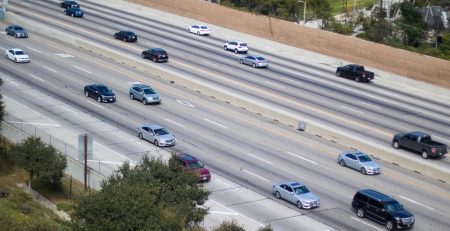Can a Pedestrian Be Liable for an Auto Accident?
Every year in Arizona, thousands of pedestrians are injured in auto accidents, often by little fault of their own. By Arizona law, anyone walking on foot or using an assisted mobility device (powered or unpowered) qualifies as a pedestrian. When in doubt, if an individual isn’t expected to use a bike lane or the roadway, treat them as a pedestrian.
If you’ve recently been in an auto accident as a pedestrian or motorist, you might not know who’s to blame. Indeed, “traffic law” might seem like it wouldn’t apply to people who aren’t driving. However, pedestrian liability is reasonably simple: although pedestrians are favored by law, they certainly can be liable for certain auto accidents depending on their actions.
How Pedestrians Can Be at Fault
At crosswalks, pedestrians nearly always have the unconditional right of way. Additionally, Arizona drivers are always expected to try and avoid pedestrians, even while said pedestrians are crossing the roadway illegally or unreasonably. However, there are still cases when a pedestrian is at fault for causing an accident:
- Ignoring traffic signals and signage. Traffic protections only extend to pedestrians when they obey relevant traffic laws; choosing to cross an intersection while traffic lights are red or crossing at a closed intersection (such as one on a highway, construction site, or anywhere else that pedestrians are not permitted) shifts fault towards them.
- Jaywalking with an accessible crosswalk nearby. Pedestrians are expected to use crosswalks, and drivers are not expected to anticipate a pedestrian crossing on random stretches of road. Note, however, that invisible/ unmarked crosswalks are protected in the same way that marked ones are; if there would reasonably be a crosswalk somewhere but none is marked, pedestrians may use it like any other marked intersection. Similarly, on extremely long stretches of road where no crosswalks are available and visibility is good, jaywalking is often reasonable.
- Being impaired or distracted. Pedestrians under the influence of drugs, alcohol, or other substances are likely to make poor decisions regarding their safety and may act extremely unpredictably, resulting in accidents even when motorists notice and respond cautiously. These restrictions also extend to distracted pedestrians, such as those who text.
- Making a reckless decision to cross. Pedestrians are expected to preserve their life and make safe decisions, regardless of the law—for example, if a car is visibly and excessively speeding, ignoring red lights, and otherwise being a hazard, and then the pedestrian crosses lawfully at an intersection despite knowing that their path could intersect with the dangerous vehicle, that would be reckless, unreasonable, and the pedestrian would garner partial fault in the event of an accident.

All of that aside, however, remember that children and incapacitated or confused pedestrians (“confused” generally referring to medical conditions, not voluntary impairment) are more or less exempt from many traditional standards of fault, as they don’t know any better or can’t be expected to make safe decisions on their own. In the event that one such pedestrian causes an accident, they’re likely to not be held liable at all, although the driver themselves might not be at fault either.
Compensation for Arizona Pedestrian Accidents
Whether you were hit as a pedestrian in Arizona or had an accident with a pedestrian yourself, you’ll likely need extensive compensation for medical bills and property damage. Motorists can file insurance claims against at-fault pedestrians and vice versa, so give ELG a call at (623) 877-3600 talk to a Phoenix pedestrian accident attorney today.






